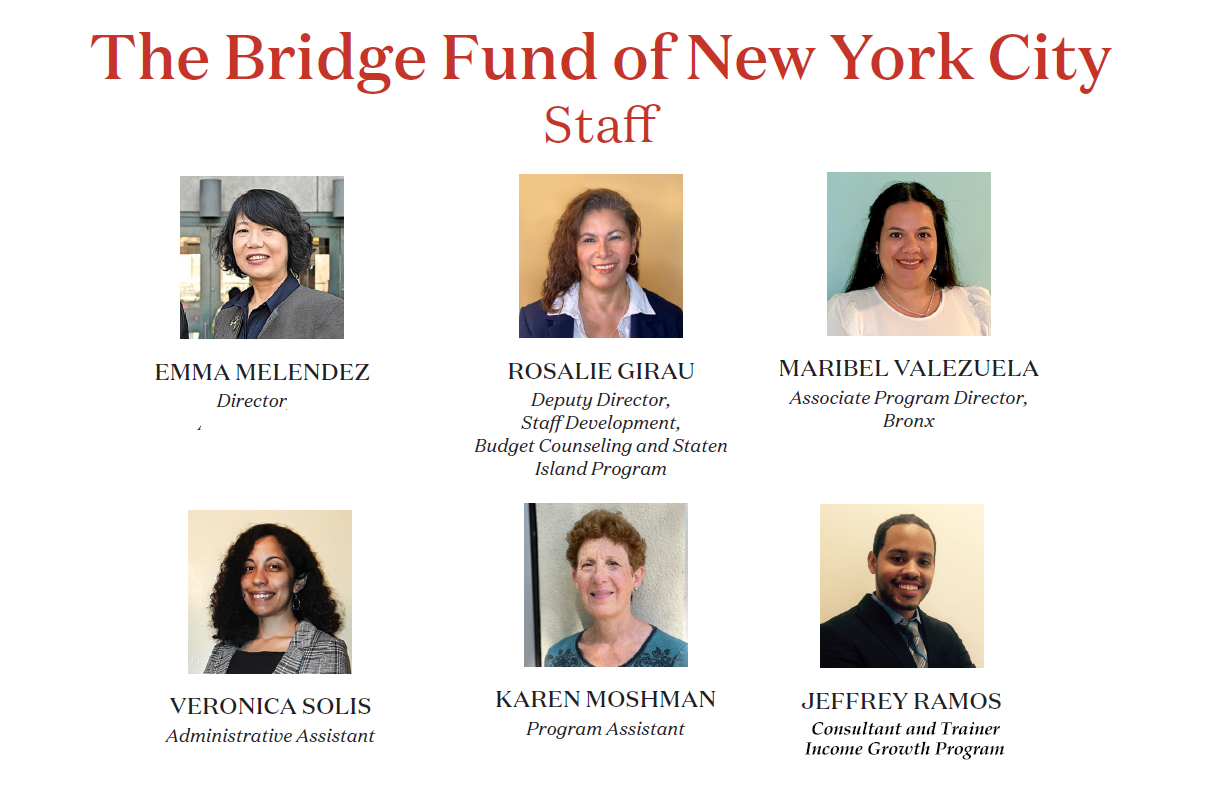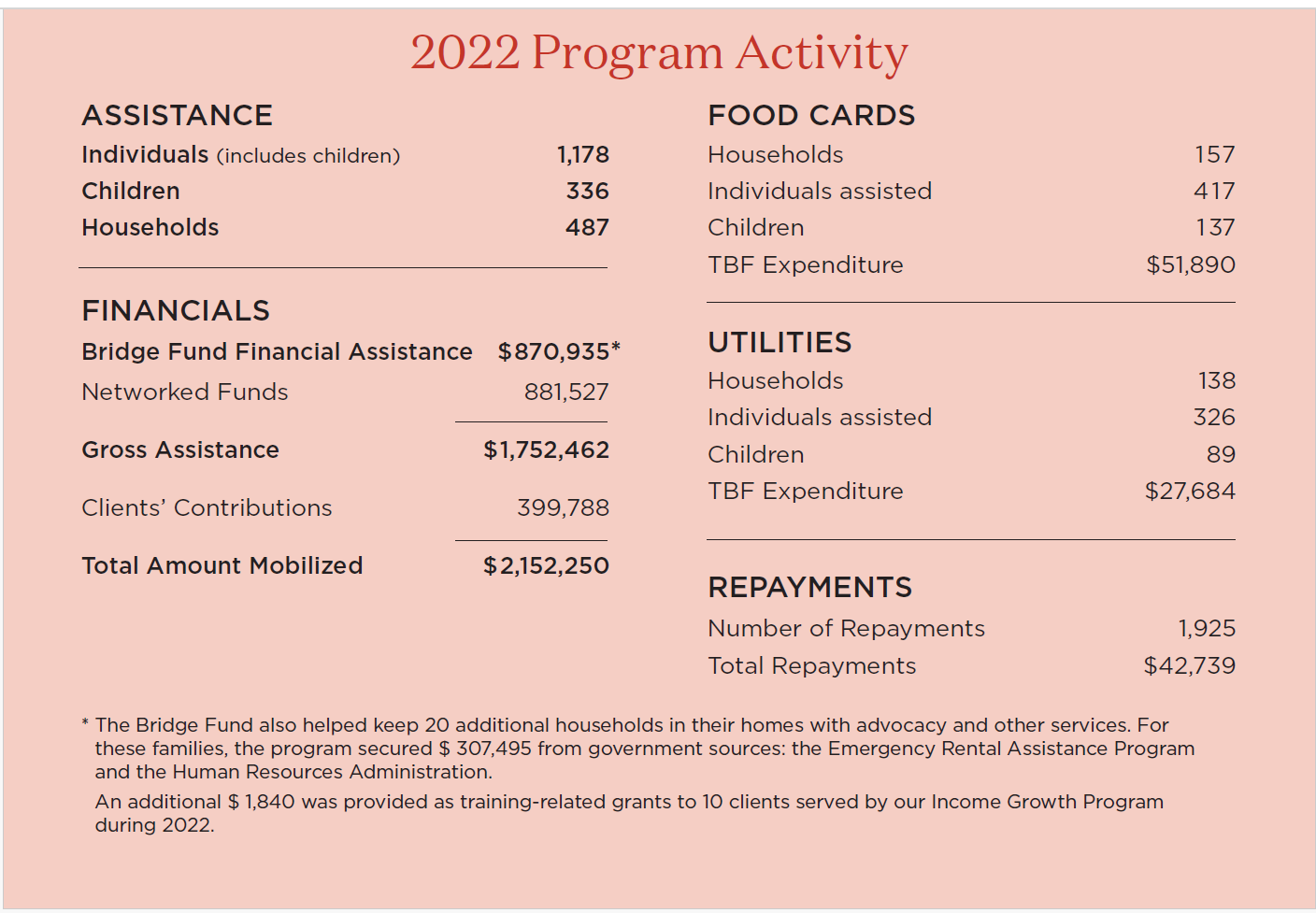The Bridge Fund of New York City
Who we are.

Emma Melendez
Director, The Bridge Fund of New York City

Recent Success Stories in New York City
Director’s Annual Message

Ways to Donate!
Many challenges persist in the aftermath of the coronavirus pandemic. The unemployment rate in NYC has remained stubbornly high: 5.3% as compared to the national average of 3.5%, as of the writing of this report in 2023. The city started the year with an estimated 260,000 cases in Housing Court, and inflation, though lower than in 2022, remains high, with food prices now accounting for an 8.4% increase over the last 12 months.
Onward and Upward!
Against this bleak background, working poor clients continue to inspire awe and give us much to be proud of. Clients like Nancy Delgado and Aida Navarro, who are featured in this Annual Report. These moms are positive role models for their children and community. They nurture and work, while pursuing college degrees that will improve their chances of securing employment that offers better pay, growth potential, and professional development. They know the importance of higher education. In fact, education was the most significant factor that accounted for why women lost jobs at a higher rate than men during the pandemic and accompanying recession. For both men and women, “those without college degrees left work at twice the rate as college graduates,” many of whom had the kinds of jobs that offered greater flexibility and could be performed from home. “The Pandemic Has Been Punishing for Working Mothers. But Mostly, They’ve Kept Working,” The New York Times, May 11, 2022.
To support our clients’ efforts to hold onto their housing (mostly rent-stabilized apartments) and their goals for the future, The Bridge Fund of New York City provides compassionate listening and encouragement, budget counseling, information and referral, benefits assessment and advocacy, career advisement, and more. With services only, the program during 2022 was able to stabilize a total of 20 client-households, consisting of 61 individuals. And, with $870,935 as interest-free loans, grants, and subsidies to pay outstanding rent, it stabilized another 487 families, consisting of 1,178 adults, children, and seniors. For some of these 487 households, The Bridge Fund of New York City also provided $51,890 as electronic food cards and utility grants that averaged $201 per family. Ten households served by our Income Growth Initiative and enrolled in approved job training programs or in area colleges were given grants, totaling $1,840 to clients to help cover the cost of books, uniforms, exam fees, and travel.
These modest investments will undoubtedly yield great returns. Based on our formal monitoring results, we know that no less than 92 percent of the clients that receive both Bridge Fund services and financial assistance to pay rent (on average, less than $1,800 per household) are in their homes one year after our initial intervention. The cost to taxpayers of shelter placement is significantly more: $72,000 per family, per year! We also know that client-graduates of our Income Growth Initiative have gone on to increase their monthly incomes and improve their budgets sufficiently to better meet their ongoing housing obligations and achieve increased work-life satisfaction.
Emma Melendez
DIRECTOR, THE BRIDGE FUND OF NEW YORK CITY


